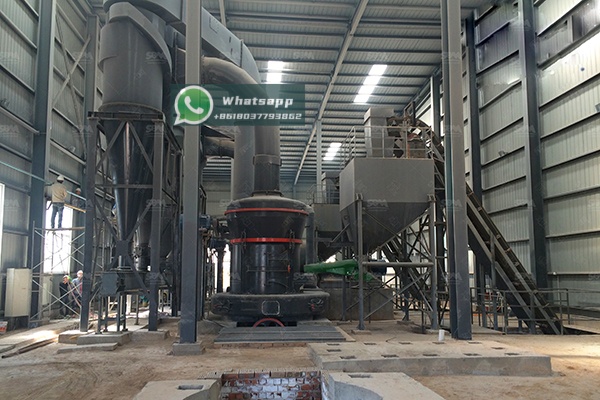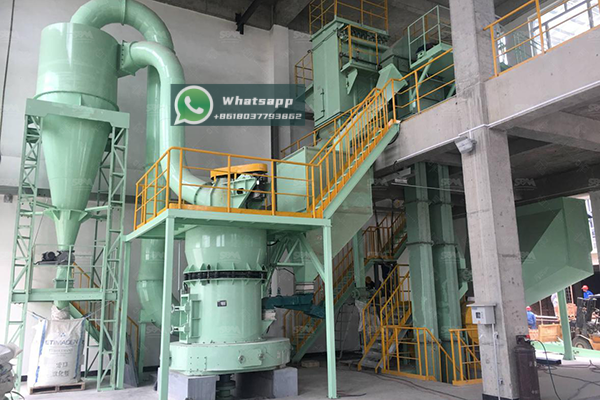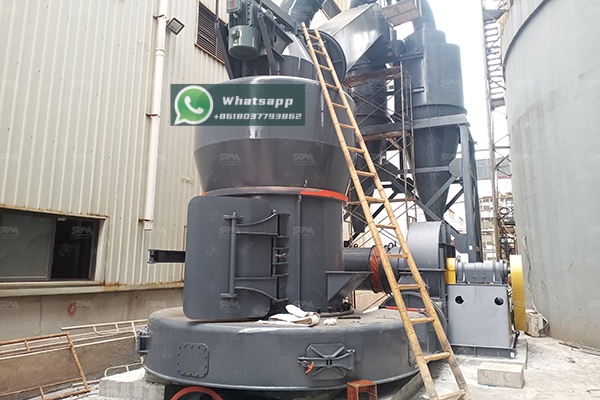The iron ore pelletizing industry relies heavily on bentonite as a crucial binding agent in the production of high-quality pellets. Bentonite, a naturally occurring clay mineral with exceptional water absorption and swelling properties, serves as both a binder and lubricant during the pelletization process. The quality of bentonite grinding directly impacts pellet strength, porosity, and overall production efficiency. This article explores the technical requirements for bentonite grinding in pelletizing plants and examines how Raymond Mill technology meets these demanding specifications.

In iron ore pelletizing, bentonite must achieve specific particle size distribution to ensure optimal performance. The ideal fineness typically ranges between 200-325 mesh (74-44 microns), with a moisture content below 10%. This precise grinding specification ensures maximum binding capacity while maintaining proper green strength during pellet formation. The grinding system must also maintain consistent output quality while handling the abrasive nature of bentonite clay, which can vary significantly in hardness and moisture content depending on the source.
Traditional grinding methods often struggle to meet these requirements efficiently. Hammer mills may produce excessive fines or inconsistent particle distribution, while ball mills consume excessive energy and require significant maintenance. The industry demands a solution that combines precision grinding with operational efficiency and reliability.
Raymond Mill technology has emerged as the preferred grinding solution for bentonite processing in the iron ore pelletizing industry. This mature grinding technology offers several distinct advantages specifically suited to bentonite characteristics. The grinding principle involves multiple grinding rollers applying centrifugal force against a stationary grinding ring, creating a consistent and controllable particle size distribution ideal for pellet binding applications.
Shanghai Zenith Machinery Co., Ltd., an excellent manufacturer of ore grinding equipment in China, has made significant achievements in the field of ultra-fine powder grinding. With specialization in research, development, and production of industrial powder grinding equipment, Zenith offers advanced Raymond Mill solutions specifically engineered for bentonite applications in the pelletizing industry.

Among Zenith’s comprehensive grinding equipment portfolio, the Raymond Mill series stands out for bentonite processing applications. The following table presents the technical parameters of Zenith’s Raymond Mill models suitable for bentonite grinding:
| Model | Roller Quantity (pcs) | Max.Feed Size (mm) | Discharging Size | Capacity (t/h) |
|---|---|---|---|---|
| YGM8314 | 3 | 20 | 1.6-0.045 | 1.2-4.6 |
| YGM9517 | 4 | 25 | 1.6-0.045 | 2.1-8 |
| YGM4121 | 5 | 30 | 1.6-0.045 | 5-11 |
The YGM4121 model, with its five grinding rollers and capacity of 5-11 t/h, proves particularly effective for medium to large-scale pelletizing plants requiring consistent bentonite supply. The adjustable discharging size from 1.6mm to 0.045mm allows operators to fine-tune the grinding process according to specific pellet quality requirements.
Zenith Raymond Mills incorporate several innovative features that enhance their performance in bentonite grinding applications. The centralized lubrication system ensures smooth operation and extends bearing life, while the pneumatic sealing system prevents dust leakage and maintains a clean working environment. The automatic control system allows for precise adjustment of grinding parameters, ensuring consistent product quality despite variations in raw material characteristics.
Another significant advantage is the energy-efficient design. Compared to traditional ball mills, Zenith Raymond Mills can reduce energy consumption by 20-30% while maintaining equivalent or superior grinding quality. This efficiency translates directly to reduced operating costs for pelletizing plants, where grinding operations typically account for a substantial portion of energy consumption.
For pelletizing plants requiring higher capacity or specialized grinding characteristics, Zenith offers the MTW Trapezium Grinding Mill as an advanced alternative. This grinding mill incorporates multiple patented technologies and represents the next evolution in grinding technology. The following table outlines the technical specifications of select MTW models suitable for bentonite processing:
| Model | Max. Feed Size (mm) | Final size (mm) | Capacity (t/h) | Main motor (kW) |
|---|---|---|---|---|
| MTW138Z | <35 | 1.6-0.045 | 6-17 | 90 |
| MTW175G | <40 | 1.6-0.045 | 9.5-25 | 160 |
| MTW215G | <50 | 1.6-0.045 | 15-45 | 280 |
The MTW series features a curved shovel blade design that increases grinding efficiency by 15-20% compared to conventional designs. The bevel gear overall transmission provides more stable operation and higher load capacity, while the internal thin oil lubrication system ensures reliable performance even under continuous operation conditions common in pelletizing plants.

The implementation of Zenith grinding equipment in iron ore pelletizing plants delivers multiple operational benefits. The consistent particle size distribution achieved through precise grinding control enhances pellet strength and reduces breakage during handling and transportation. This improvement directly impacts product quality and reduces material losses throughout the production chain.
Maintenance requirements represent another significant advantage. Zenith grinding mills are designed with accessibility in mind, allowing for quick replacement of wear parts without extensive disassembly. This feature minimizes downtime and ensures continuous operation critical to pelletizing plant profitability. The robust construction withstands the abrasive nature of bentonite, extending equipment lifespan and reducing total cost of ownership.
Modern pelletizing operations face increasing pressure to minimize environmental impact while maintaining production efficiency. Zenith grinding equipment addresses these concerns through several design features. The efficient dust collection systems integrated into both Raymond Mill and MTW Trapezium Mill models effectively control particulate emissions, ensuring compliance with environmental regulations.
Energy efficiency represents another environmental advantage. The optimized grinding chamber design and efficient classifier systems reduce power consumption per ton of processed bentonite, contributing to lower carbon emissions associated with pellet production. These environmental benefits align with the iron ore industry’s growing focus on sustainable production practices.
A major iron ore pelletizing facility in Northern China recently upgraded their bentonite grinding system with Zenith YGM4121 Raymond Mills. The implementation resulted in a 22% reduction in specific energy consumption compared to their previous ball mill system. Product consistency improved significantly, with particle size distribution meeting specifications in 98.5% of production samples compared to 85% with the previous system.
The plant reported additional benefits including reduced maintenance downtime and lower consumption of grinding media. The automated control system allowed operators to quickly adjust grinding parameters in response to variations in raw bentonite characteristics, maintaining consistent product quality despite feedstock variability.
The evolution of grinding technology continues to address the changing needs of the iron ore pelletizing industry. Future developments likely include enhanced digitalization features, with real-time monitoring of wear patterns and predictive maintenance capabilities. Integration with plant-wide control systems will enable optimized grinding parameters based on downstream pellet quality measurements.
Zenith’s ongoing research in ultra-fine powder grinding positions the company to lead these technological advancements. The development of hybrid grinding systems combining multiple grinding principles may offer further improvements in efficiency and product quality. These innovations will support the pelletizing industry’s continuous pursuit of higher quality pellets with reduced environmental impact.
The selection of appropriate grinding equipment for bentonite processing represents a critical decision for iron ore pelletizing operations. Raymond Mill technology, particularly as implemented in Zenith’s grinding equipment portfolio, offers an optimal balance of precision, efficiency, and reliability. The technical specifications and operational benefits demonstrate why this technology has become the industry standard for bentonite preparation.
As pellet quality requirements continue to evolve and environmental considerations gain importance, the advanced features of modern grinding systems will play an increasingly vital role in pelletizing plant performance. Shanghai Zenith Machinery’s expertise in industrial powder grinding equipment provides pelletizing operators with reliable, efficient solutions tailored to the specific demands of bentonite processing in the iron ore industry.